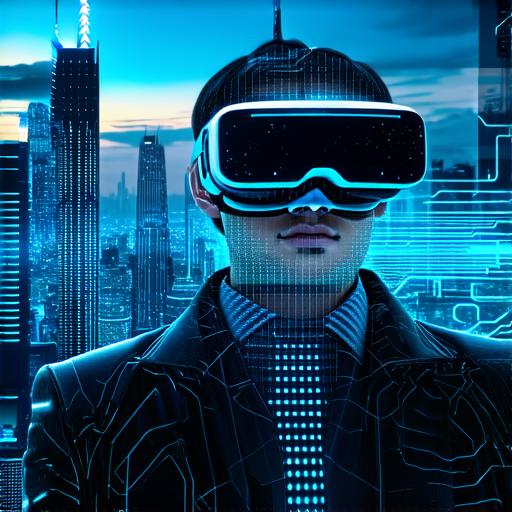
How are virtual reality and human perception interconnected?
Virtual reality (VR) technology is revolutionizing the way we experience the world. From gaming to education, virtual reality is being used in a variety of industries to create immersive experiences that were previously impossible to achieve.
What is Virtual Reality?
Virtual reality is a computer-generated simulation that allows users to experience an environment as if they were physically present in that environment. This can be achieved through the use of headsets, sensors, and other devices that track the user’s movements and adjust the virtual environment accordingly. By creating a highly immersive experience, VR technology has the potential to change the way we perceive and interact with the world.
How does Virtual Reality Interact with Human Perception?
Human perception is the process by which we interpret and understand the world around us. This process involves the brain receiving information from our senses, processing that information, and then creating a mental representation of the world based on that information. Virtual reality technology can interact with human perception in several ways.
Firstly, VR technology can manipulate the sensory input that we receive. By presenting users with a highly immersive virtual environment, VR can trick our brains into believing that we are physically present in that environment. This can lead to a range of physiological responses, such as increased heart rate and sweating, which would normally be associated with a real-world experience.
Secondly, VR technology can alter the way we perceive the world. By presenting users with a virtual environment that is different from their physical surroundings, VR can challenge our assumptions about what is possible and encourage us to think in new ways. For example, VR can be used to simulate environments that are not physically possible, such as underwater cities or futuristic landscapes, which can help us to better understand the limitations of our own perception.

Real-life Examples of Virtual Reality and Human Perception
One real-life example of how virtual reality is being used to enhance our understanding of the world is in the field of education. Virtual reality technology can be used to create immersive learning environments that allow students to experience historical events, scientific concepts, and other subjects in a way that was previously impossible. For example, a history teacher could use VR technology to take their students on a virtual tour of ancient Rome, allowing them to explore the city as if they were physically present.
Another real-life example is in the field of medicine. Virtual reality can be used to simulate medical procedures and surgeries, allowing doctors and nurses to practice and perfect their skills in a safe and controlled environment. This can lead to improved patient outcomes and reduced risks associated with surgical procedures.
FAQs
Q: How does virtual reality interact with human perception?
Virtual reality technology can manipulate the sensory input that we receive and alter the way we perceive the world.
Q: What are some real-life examples of how virtual reality is being used to enhance our understanding of the world?
Virtual reality is being used in education to create immersive learning environments and in medicine to simulate medical procedures and surgeries.
Q: How can virtual reality technology be used to challenge our assumptions about what is possible?
Virtual reality can present users with a virtual environment that is different from their physical surroundings, which can help to challenge our assumptions about what is possible.


